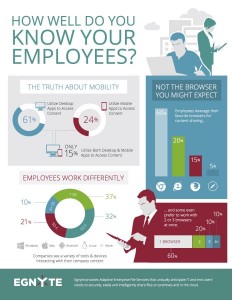— April 7, 2019
Small and medium-sized businesses can use white papers to generate leads — just as bigger companies can.
Combine the power of high quality information and social media
Note: This is a long article with lots of information, and it will take about 15 minutes to read. It has an introduction, six sections, plus a short conclusion.
ARTICLE SUMMARY
Information can be used as a tool to generate leads for the business that produces it. Like any other tool, for the best results, it must be good quality and it must be used in a specific way.
For information to be a useful lead-generating tool for your business, it must be:
- High quality, backed by evidence (not a sales pitch)
- On a topic within the area of expertise of your business — whether that is plumbing or fine wine
- Distributed in a specific way
Big companies frequently use information in this way, calling it a “white paper”. Small or medium-sized businesses can use information in the same way, and for the same purpose — but rarely calling it a “white paper”.
A good white paper provides something of value to its readers — reliable, useful information. The business that produces and distributes it gets something in return — high quality leads. Those leads provide their email addresses to access the white paper. And, once you have their permission, you can use email marketing to turn those leads into customers.
Introduction
If your SME (small or medium enterprise) is finding it difficult to attract as many high quality leads as you’d like, you are not alone:
60% of [small and medium business] owners say that “Finding qualified leads” is a “critical, major, or moderate challenge”
As you know, there are many different methods you could use, from TV ads to tweets. But advertising is often expensive, or time-consuming, or both — and it’s not always clear that it results in good quality leads. (It can be useful for other marketing purposes, though.)

In this article, you will will learn what a white paper is and exactly how to use it to generate high quality leads.
This article explores in detail how your SME can benefit from the white paper method of generating leads.
Once you’ve read this article, you will know:
- What a white paper is (in this context) and what a good one should contain
- How a white paper can generate qualified leads for your business
- How to put a white paper to good use
- How to go about producing a white paper
1. Why does your business need a white paper?
TV, radio, and newspaper ads hit equally the eyes and ears of every member of the diverse group watching TV, listening to the radio, or reading the paper when the ad runs. Potential customers may see or hear your ads, but so do many people who are not potential customers.

A TV ad hits equally the eyes and ears of every member of its diverse audience.
In this case, even if your ads are well-designed and work for brand awareness, they are unlikely to generate high quality leads.
“Without active lead generation efforts, it will be very difficult to grow and scale your current business.”
You know that online marketing is important, and because it’s cheap (or even free), you’d like to take advantage of it. But you’re not alone if your website gets fewer visits than you’d like and your social media posts get a tepid response.
You know you need great content to engage people online. But you may not know what content to create, or it simply takes too much time to create it. And, once you have it, you’re not sure how you should you use it.
When asked what were the “most difficult obstacles in the achievement of important lead generation strategy objectives,” the answer with the biggest share of responses by small and medium businesses (38%) was “No original and attractive content”, and the next biggest share (36%) was “No effective lead generation strategy.”
A white paper, done well, is great content. Section 2 will go into detail about what, exactly, a white paper is. For now, keep in mind that it’s a document that provides high quality information in your area of expertise, whether you’re a child psychologist or an electrician.

White papers can be produced for any area of expertise.
Businesses of many different types can make use of white papers in their area of expertise.
“[I]f you run a tire and auto repair business you can prepare white papers on tire selection, pros and cons of rebuilding an engine, maintenance schedules, and so on.”
Great content is not enough, though. It must be used in the right way if it is to generate leads. Section 4 will explain in detail how to use a white paper as an effective lead generation tool. But the basic idea is that a visitor to your website enters some information in return for a link to download your white paper.
They might enter their name, an email address, and phone number — and thus they become a lead for your business, and you have an opportunity to gain a future customer. (Email marketing is still a very effective form of marketing.) Since they want your white paper, you know they’re already interested in what your business does! You’ve got their attention.

If someone wants your white paper, you have their attention, and you know they are interested in your area of expertise.
2. What, exactly, is a white paper?
You may have heard the term “white paper” in the context of a government document, which is the original source of the term. (Google “Winston Churchill 1922 White Paper”.) The term expanded to include detailed reports on subjects other than policy or potential legislation. A research group might publish a white paper to explain their findings for laypeople, say.
Businesses in the tech sector started using them to communicate with other businesses. The document would provide detailed information about a proposed technical solution to a particular problem.

White papers have traditionally been used by businesses in the tech sector to explain complex products to other businesses.
“The thing is… white papers can work just as well for small businesses as multi-nationals. I’ve been writing B2B marketing documents for over seventeen years and – without exception – white papers outperform all other types of sales documents when it comes to generating leads.”
These days, white papers are no longer restricted to highly technical subject matter. They are common in the B2B (business-to-business) market more generally. And they’re becoming more common in the B2C (business-to-consumer) market.
Independently of subject matter, the crucial thing that all these different sorts of white paper have in common is that they are about genuine, useful information.
In the B2B world, the term “white paper” is pretty familiar. But it probably makes sense for you to call your white paper something different. Perhaps you’ll call it a “Guide” or “Tips” or “Advice” or a “Special Report”. But the structure is the same in all effective white papers, regardless of the name:
- Describe a problem your ideal reader has
- Explain how a generic type of solution would help them
- Briefly mention the specific solution you offer
You want your reader to recognize a problem they have. Perhaps they spend too much time manually updating spreadsheets, or they want to spend less money on their electricity bill.

Explain the benefits of the generic type of solution before talking about your specific solution.
Then you explain how a generic type of solution would work for them. When you provide the generic solution in your white paper, you talk about how software of the type you sell can automate much of the reader’s accounting. Or you explain how light bulbs of the type you sell can reduce electricity usage.
At the end of the white paper you will touch on why your reader should prefer your specific product or service. (Perhaps you provide free tutorials; or you’ve been in business longer; or you have a track record of exceptional customer service; or your product is higher quality than others…)
Of course, on some level, readers know they’re being marketed to — just as you know that the free mint at the end of a restaurant meal is really part of a marketing strategy.
You’re not tricked by the free mint, but getting it doesn’t feel like marketing. And even though you know that the mint is marketing, it is nevertheless something of (slight) value to you that you get for free. And it probably serves to make you feel slightly happier about paying the bill. 🙂

You know the free mint is part of an overall marketing strategy. But it doesn’t feel like marketing.
3. What is not a white paper?
White papers provide useful information in a few pages — not enough to be an eBook. But, most importantly, a white paper is not a sales pitch (like a brochure). In fact, pushing sales too hard in a white paper is a turn off to the reader — who was promised useful information. The reader learns how the type of solution you provide can benefit them or their business.
Of course, some companies don’t bother with research, use advertising-style copy, and call some poorly written fluff a “white paper”.
Don’t be tempted to do that.
Weak content can be detrimental to your business because it will likely annoy or disappoint the reader, who was expecting useful information. You’ll need a strong writer who is also able to do the research necessary for a high quality white paper.

The person who writes your white paper needs to be able to do research.
White papers can be any length, but there seems to be some overlap among veteran business writers, such as Carol Tice and Gordon Graham, regarding the standard range:
“[M]ost white papers run 3 – 10 pages these days.”
(Source.)
“Today’s ‘typical’ white paper is 6 to 8 pages long, shorter than in past years.”
(Source.)
For a small business that doesn’t deal with a highly technical product or service, the shorter end of that range is probably the right ball park. If your product or service is more complicated, your white paper is likely to be longer.
If a white paper is too short, it feels like a bait and switch, with not enough value to the reader. Too long, and it feels like too much time and effort to read it.
(Of course, these days, white papers are usually not printed on actual paper — white or otherwise. They are typically a PDF read on a screen.)
4. What do you do with a white paper?
You have the solution to a problem your potential customers have and you’re providing them information on how to solve that problem. The information is valuable because you’re an expert in your field.
Your goal is to use that information to generate more leads for your business. By using your white paper in the right way, it can generate high quality leads.
You can’t just put a white paper on your website and expect people to find it. It’s a marketing tool that needs to be used.
The main point is that your white paper needs to be gated content, not immediately accessible to just anyone. (This means that the content is behind a ‘gate’, such as form on your website.) You want to ensure that the people who access it:
- Are interested in the topic
- Have a problem your business can address
- Have given you their name and email address
Before you publish your white paper, create some anticipation about it. Have people sign up to receive it before it’s published. Then you have a list of readers ready to go.

Before your white paper is published, create a bit of a buzz about it.
Don’t send people to your home page and expect them to search around to find the download. Send them directly to a dedicated landing page. Here are some examples of landing pages for white papers:
A White Paper on How to Write a White Paper
Free White Paper for Production Scheduling Solution Architects
White Paper: Water Meters and the Internet of Things
Don’t ask for too much information. People are willing to give a name, a company name, and an email address in order to read the document, but much more than that, and you’re going to turn too many of them off. And you want their email addresses so you can ask permission to send them more emails — because you want them to become paying customers.
Depending on its length, chunks of your white paper may be used as blog posts. Smaller snippets can be used as tweets or Facebook posts. Use those snippets to drive traffic to your website.
Present the first page or so of your white paper to anyone who cares to look. Or summarize the white paper in bullet points. If the visitors to your website are still interested — which filters out quality leads from slightly curious passers by — they should enter their contact details for a link to download the entire white paper.

Once your white paper is published, use social media posts to drive traffic to your website.
If possible, add social media buttons to your landing page to encourage people to share the link with others who might be interested. You could also run traditional ads (e.g. in your local paper) sending people to your website to get their download.
Summary of section 4 :
- Create buzz by asking people (via email, ads and/or social media) to sign up ahead of time.
- Give the white paper its own dedicated landing page.
- Post snippets on social media, with a link directing people to the landing page.
- Enable anyone who visits to be able to read a summary or the first page or so.
- To read the rest, visitors need to provide an email address.
5. What are the potential problems with a white paper?
It’s a tool, not a magic bullet. It will fail to produce results if it’s not put to good use. Wasted time and money.

You need to plan how to get the most out of your white paper, so you’re not pouring money down the drain.
The first thing you need to do is plan. Come up with a timeline for the various steps involved in producing a white paper. Maybe it makes sense to release your white paper at a certain time of year, such as just before Christmas or in late summer. Keep that date in mind as you work backwards in your timeline, creating intermediate deadlines for each stage.
Quality content takes time and money to produce. A high-flying white paper writer like Gordon Graham can charge clients like Google and IBM $ 7000 for a white paper. (Source.)
Of course, smaller companies can expect to pay significantly less than that for a writer who does not yet have big league clients.
But — word of warning — avoid the so-called “content mills” you can find online. On these sites, you may well find someone who will write a white paper for $ 100, but the reliability of the writers is highly variable. (The reliability of the clients that writers find on these sites is highly variable too!)
You might think that people don’t read long-form content any more. But that doesn’t seem to be the case.
Even though people are likely to skim a white paper the first time they look at it, people do read and value long-form content. The idea that we have shrinking attention spans is a myth.
What is true, though, is that attention is a hot commodity in these days of sound bites and tweets — and white papers do need to be able to compete.
That’s why it’s important to make sure your white paper is visually appealing and easy to skim, with plenty of white space, bullet points and highlighted key points.
But the valuable content must be there, even if it’s skimmed over the first time. Your potential customers will feel cheated if they don’t get quality content for their efforts.
Some argue that long-form content has other benefits too, such as being shared more than shorter content.
(Gated content cannot help with SEO [search engine optimization] because the search engine bots can’t access it. So if improving SEO is your primary goal, rather than generating leads, you’re likely better off publishing your long-form content on your website for anyone to access, rather than making it gated content.)
And, finally, unless a white paper is vigorously marketed when it’s published, it won’t produce good results in the form of leads. So plan your ads and social media campaigns carefully, and consider using a tool like Hootsuite, so you schedule automated social media posts in advance.
6. How do you produce a white paper?
Remember that you are an expert in your field. A lot of the information that will end up in your white paper is inside your head. The trick is to convert your knowledge into clear written content.
There are some great online resources and books, on how to turn your knowledge into a white paper. I highly recommend Writing White Papers: How To Capture Readers And Keep Them Engaged by Michael A. Stelzner.

Make sure you present your knowledge in a way that is accessible to non-experts.
Bear in mind that if you hire a writer to produce your white paper, it’s not necessary for them to be an expert in your field. It is essential that they are able to do research, though. If they can do research and ask experts (including you!) the right questions, then they don’t need to be an expert. But they do need to be able to distill that expertise and knowledge into language a layperson can understand and appreciate.
In this final section, we will look at the steps involved in creating a white paper.
These are four main phases in producing a white paper:
- Preparation
- Research
- Writing & graphics
- Review/editing
PREPARATION
Why should a customer use your product or service? What problem does your customer have that you are able to solve? What do you have to offer that competitors may not? You need to be able to answer these questions in order to produce a white paper.
“To come up with an appealing whitepaper topic, brainstorm things that your customers care about, as well as things that your business can help them with. The intersection of the two is where you’ll find your ideal whitepaper topics.”
Once you’ve clarified your topic, identify your ideal reader. If your white paper is B2B, what industry do they work in? What’s their job title? How big is their company? What are their goals at work? If your white paper is B2C, where do they live? How old are they? Do they have kids? Any other crucial characteristics?
Then you need to produce an outline. Map out your plan for your white paper. Before you go further than this, check your plan with key members of your team. You don’t want to start your in depth research and then discover not everyone is on board.
RESEARCH
Your own company might have existing documents that help you (PowerPoint presentations, data sheets, press releases, brochures, info on your website, etc). These are good places to start. External press reports and articles about your company might also be useful.
You might want to interview people who are experts in your field to add authority and flavour to your white paper. As long as you cite your sources properly, you can also use interviews that someone else has performed.

Consider including interviews in your white paper to add authority and flavour.
Always remember that white papers need to be valuable to your readers. This means that claims need to backed up. The nature and depth of the research will depend on the specifics of your white paper.
Articles in trade magazines and websites will be fine sources for some types of white paper (say, if you’re talking about home decorating trends). But for other white papers, you’re going to need to access scholarly research (say, if you’re talking about the health benefits of green tea).
Once you’ve done your research, you will be able to add some more detail to your outline. It’s a good idea to go over this with your team, before heading into the writing and design phase.
WRITING & GRAPHICS
Create a compelling title that will grab attention and make sure you keep that attention throughout the first page. Ensure your reader wants to read more. Here is a useful tool for assessing headlines.
To write the core of your white paper, break it into manageable sections, and work on each section separately. It’s a significant investment of time, but you want your white paper to be the best it can be.
As mentioned earlier, a white paper must also be visually appealing. Even though it is an informational document, your readers are still human beings who will doze off if faced with a plain wall of text. Eye-catching images, and relevant diagrams or charts, all help to make your white paper more attractive and engaging. Pxhere is a great source for free, non-copyrighted images.
Depending on your budget, you may want to hire a professional graphic designer to deal with the visual side of things. To keep costs down, you can use a drag-and-drop template. You can download a template, and find more advice on how to create and use a white paper at CoSchedule and Curata. A variety of free web-based templates are available at Lucidpress.
REVIEW/EDITING
Get at least one other set of eyes to proofread and edit for you. You need someone who is experienced with editing, and who can check for clarity and logical flow.

Have test readers check for grammatical errors and typos — and also for logical flow and ease of reading.
Test out your document on someone who is in your target market and ask them what they think. Encourage them to be ruthlessly honest! If you can get multiple proofreaders and test readers, that’s even better. It would be disappointing to do all that work, and have a document that is hard to follow or riddled with typos!
MARKETING
Once you’ve completed your white paper, you need to market it. Treat it like a product launch.
Conclusion
So you are now in a position to start creating a white paper. Here’s a summary of the important points, if you want to use a white paper as a lead-generating tool for your business:
- It must be high quality, and backed by evidence (not using “salesy” language).
- It needs to be on a topic within the area of expertise of your business. And it needs to address a problem your typical client faces.
- A white paper provides a general solution to your client’s problem, before touching on your specific solution.
- The entire process must be planned.
- The person who writes your white paper needn’t be an expert in your field, but they must be able to do research.
- It must be written in a way that a layperson can understand.
- It must be visually appealing.
- It must be gated content so that each reader provides you with their name and email address.
- It needs to be vigorously marketed, starting before it is published.
Originally published here
Digital & Social Articles on Business 2 Community
(69)







